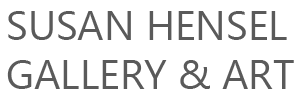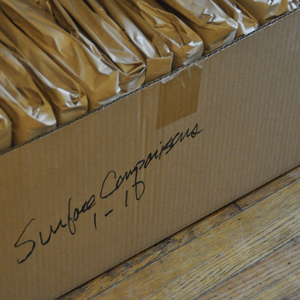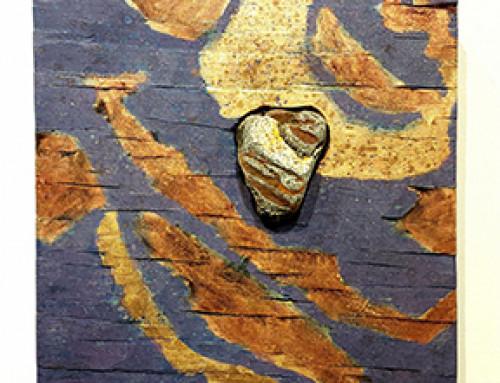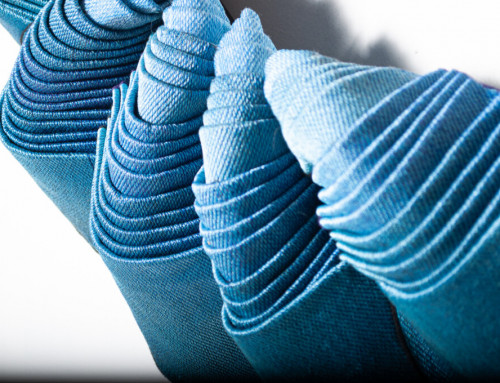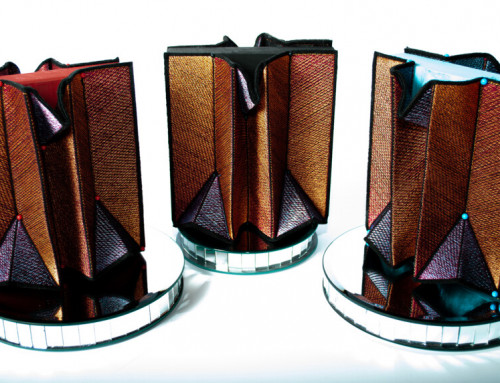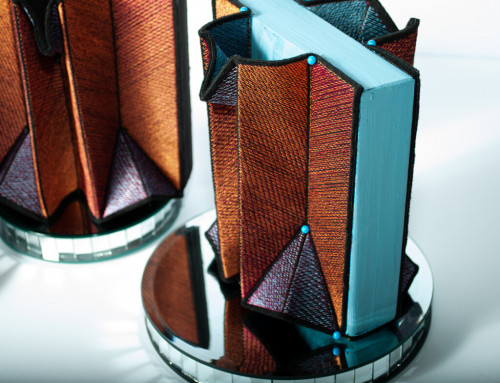An orderly procession
Project Gutenberg, the online archive of literature, ironically destroys printed books in order to salvage the information. Ironically, the process turns well ordered, collated text into a collection of dis-bound, chaotic materials that may or may not convey conventional information to us.
With the project Gutenberg project Jeff Rathermel has collected this discarded material and compiled and re-ordered it into comprehensible collections of information. He has reconsidered the book in all its parts and has chosen attributes to highlight.
Susan Hensel Biography – Contemporary Art by Susan Hensel
Hensel’s artwork is known and collected nationwide, represented in collecting libraries and museums as disparate as the Museum of Modern Art in New York and The Getty Research Institute. There are major holdings at Minnesota Center for Book Arts, University of Washington, Baylor University, and the University of Colorado at Boulder. Archives pertaining to her artist’s books are available for study at the University of Washington Libraries in Seattle.
Artist Statement
I am a multidisciplinary artist, with a 50+ year career, who combines a mixed media practice with embroidery across digital and manual platforms. Additionally, I make sculpture and wall art using the colors and techniques of commercial embroidery, designed on the computer and stitched out on the computer-aided embroidery machine with the aim to create an experience for the viewer that overwhelms with color, transcends the quotidian and encourages one, for even a few seconds, to step outside the narrative of the ego into a place of pure sensation.
Digital machine embroidery is not a substitute for, nor a speedier version of, nor an imitator of handwork. It is a mindset and a media choice in and of itself.
As an artist, I find the beauty and the structure of embroidery thread qualitatively unique. It also deals in optical color perception but provides a lenticular opportunity due to the tri-lobal structure of the thread and its ability to bend light. Likewise, to quote Jane McKeating, “Color drips off the needle every bit as richly as from a brush.”
Digital embroidery lends itself to hard-edge geometry as well as biomorphic form. The combination of high tech with “women’s work” also provides a delicious contrast of hard/soft, nostalgic/current, objective/non-objective. It also lends itself to modular repetition and re-combinations. Additionally, themes can be played out quickly in the computer and then stitched and sampled oh so slowly on the machine, combined with and without mixed media in a wide-ranging exploration of forms in space.
In this chaotic time, digital textiles seem like a way to begin to bring order to the world. Order is, however, always unstable, a glimmer of hope, cut off by random acts of chance or intent. However, it is no different in digital embroidery. In the computer, all things seem orderly, put together, and logical, as though the human propensity for chaos did not exist. In production, chance operates: human error, flawed thread, broken needles, run out bobbins, high humidity, low humidity, fabric popping out of hoops and the panicked phone call from a friend. Repair savvy, canny attention, and a spirit of wadi-sabi is essential.
